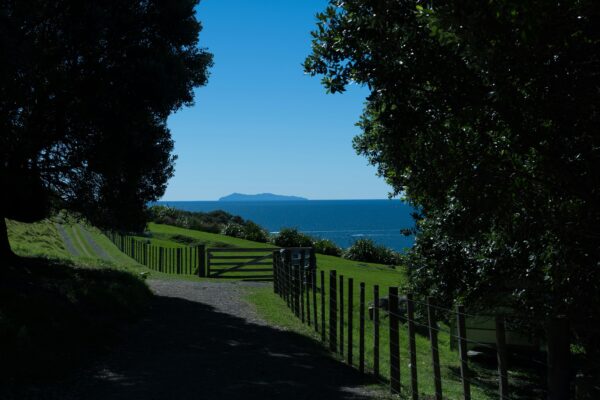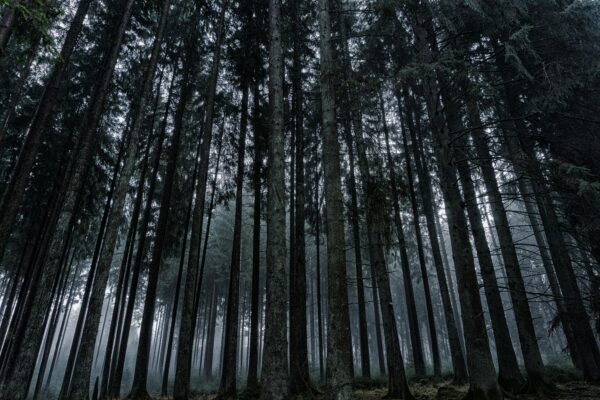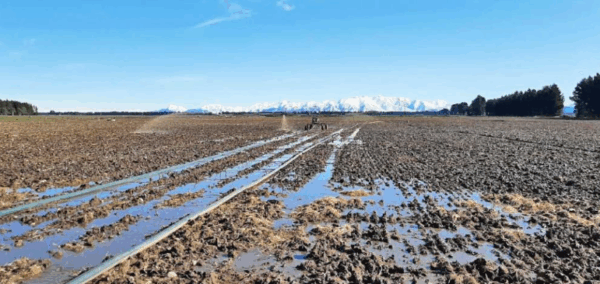An observation by Andi Cockroft. Chairman, CORANZ
Part 1 – Where Have All Our Places Gone
For generations, New Zealanders have lived with an unspoken understanding: the countryside was open.

A knock on the farmhouse door, a wave from the gate, and a hunter, tramper, or kid on a bike could cross a paddock,follow a fenceline to the river, or climb a bush ridge. It was never written down. It didn’t need to be.
It was a cultural contract built on trust, neighbourliness, and a shared sense that the land was for everyone.
Today, something quieter but more profound is happening than most people realise.
The gates are closing.
Locked steel barriers appear where a simple wire loop once hung.
Forestry companies install surveillance cameras at former access points.
Signs multiply: PRIVATE LAND. NO TRESPASSING. AUTHORISED PERSONNEL ONLY.
Much of this is not malicious. It is structural. New Zealand’s landscape has been reorganised around large corporate owners—many of them overseas—whose priorities lie in risk minimisation, liability, and asset protection rather than community goodwill.
This first part sets the stage for a story told in six parts: the gradual decline of outdoor access, the commercial forces behind it, the legal battles around public rights, and what New Zealand must confront if we wish to preserve the open, generous countryside that once defined us.
At the heart of this change lies a single question: What does “the Kiwi way” mean, when the gate that symbolised it is locked?
Part 2 – Forestry: When Foreign and Corporate Owners Fence Off the Bush
Corporate forestry now occupies millions of hectares of New Zealand.

For decades, forestry blocks—whether owned by families, Crown entities, or local companies—were informally accessible.
Hunters used skid sites to reach ridge crests; trampers followed forestry roads deep into the hills.
This changed dramatically as ownership shifted toward multinational investors.
Overseas forestry firms often manage hundreds of thousands of hectares from offices in Singapore, Tokyo, or New York.
For these organisations, local goodwill is irrelevant; liability and risk management dominate.
As a result:
– Many blocks now require permits and $10–20 million public liability insurance.
– Gates that stood open for decades are locked year‑round.
– Some companies restrict access even on legal public roads passing through their estates.
– Traditional gathering, pig hunting, mountain biking, and river access vanish overnight.
A telling example emerged on the East Coast, where entire valleys once used recreationally were closed after overseas acquisition.
Local hunters described losing access to areas they had used “since their grandfather’s time.”
The shift wasn’t personal—it was procedural. To a corporation, recreation is a risk, not a birthright.
This tightening aligns with what we will explore in later parts: law intended to guarantee public access has not kept pace with corporate ownership models.
Forestry has become a symbol of the new reality: land managed for industrial output, not community connection.
Part 3 – The Dairy Boom and the Quiet Creation of No-Go Zones
Effluent-to-land systems, high-density milking operations, and large-scale irrigation schemes have reshaped much of New Zealand’s farming environment. As dairy expanded, so did the infrastructure needed to manage it—and that infrastructure came with hazards.

Farmers who once offered access freely now face:
– contamination risks from effluent irrigation areas
– insurer requirements to restrict public interaction with operational sites
– biosecurity concerns
– safety hazards around ponds, irrigators, and machinery
The result?
Large areas of farmland that were once open are now effectively off limits.
Effluent disposal fields are particularly sensitive.
Where a paddock is part of the effluent system, insurers often recommend excluding public access entirely.
Farmers themselves, already pressed by compliance costs, sometimes prefer to “lock things down” than manage risk.
Rivers once reached through farms have become fenced corridors; swimming holes have vanished behind locked gates.
Hunters and fishers who built relationships with landowners now find that multinational corporate owners—especially large milk processors or land investment companies—treat recreation as an inconvenience.
Again, the story is not about blame. It is about structure.
Modern dairying operations are designed for efficiency and compliance—not relationship-based access.
This part of the picture helps explain why so much of rural New Zealand now feels closed, not by choice, but by system design.
Part 4 – Paper Roads, Public Rights, and the Battle Over Who Controls the Countryside
Few New Zealanders realise that the single greatest public access network in the country is hidden on maps:

unformed legal roads, or “paper roads.”
These strips of legal public land—tens of thousands of kilometres of them—exist specifically to guarantee access to rivers, coastlines, reserves, and back-country routes.
In theory, they are as public as Queen Street.
In practice, many are blocked.
The now well-known Mahia dispute highlighted the problem.
A locked gate appeared across an unformed legal road that locals had used for generations.
Despite being a fully legal public road, access was denied until years of challenges forced attention to the issue.
Even then, enforcement was slow and uncertain.
Across the country:
– locked chains block paper roads
– gates appear without council permission
– signs falsely claim private ownership
– access is discouraged through intimidation or confusion
For ordinary people, contesting these closures is nearly impossible.
The onus falls on individuals to challenge well-resourced companies or absentee landowners.
This part highlights one of the most perplexing contradictions:
New Zealand legally protects access that, in reality, many cannot use.
The next part explores why, and how policy unintentionally reinforces these barriers.
Part 5 – How Health & Safety and Policy Settings Quietly Shut the Gate
Even the most generous, community-minded landowner today faces a problem unknown in earlier decades: health and safety liability.

The Health and Safety at Work Act dramatically increased perceived risk for landowners.
Although the law was not designed to stop public access, many landowners believe allowing recreational users turns them into “PCBU duty holders” with legal responsibility for strangers who choose to cross their land.
Insurers, never fond of ambiguity, often take the safest possible interpretation: recommend against public access wherever there is potential hazard.
For corporate landowners, this becomes policy.
They do not weigh tradition, goodwill, or neighbourliness—only risk.
Examples include:
– forestry companies closing entire estates citing H&S
– dairying corporates ending long-standing hunting access agreements
– councils restricting informal access to land-banked areas
– absentee or foreign owners refusing all requests simply because the law is hard to interpret
The 2025 reforms acknowledged this chilling effect, aiming to clarify that landowners are not liable for reasonable recreational users acting of their own choice.
But until guidance, enforcement, and insurance norms change, risk-averse closures will continue.
This fifth part sets up the final section:
How can New Zealand reclaim outdoor access in a way that respects both safety and tradition?
Part 6 – Reclaiming the Outdoors: Paths Forward
New Zealand does not need to choose between safety, industry, and public access.

It can have all three—if it acts deliberately.
Here are practical, achievable steps:
1. Enforce unformed legal roads consistently.
Councils must act swiftly on illegal gates. The law already exists; it simply needs application.
2. Treat public access as a benefit under Overseas Investment rules.
If foreign corporates buy vast forests or foothill farms, they should be required to maintain defined access routes.
3. Clarify health & safety obligations.
Make it explicit—again—that recreational users choosing to cross land do not create unreasonable liability for owners.
4. Support landowners who *want* to allow access.
Provide template agreements, insurance guidance, and simple mechanisms to manage seasonal risks.
5. Fund Herenga ā Nuku (The Outdoor Access Commission) to negotiate access at scale.
The Commission has the mandate but lacks the resources to contest every closure.
6. Protect river margins, coastlines, and historic tracks with stronger statutory rights.
The goal is simple:
a modern framework that honours New Zealand’s historic culture of generosity without exposing landowners to modern risks.
This series ends with a call, not a lament.
The locked gate is not inevitable.
The open countryside can return—but only if New Zealand chooses to rebuild the trust, clarity, and shared purpose that once kept it open.

Well done Andy. The article is both comprehensive and easy to follow. We all have particular concerns depending on our use of the great outdoors. Mine is access to rivers and you have done a great job there; especially re. papaer roads. Take a bow.
Corporates are the big threat in a number of ways. They do not give a damn for people – maximum profits are their aim to the exclusion of all other aspects dear to the Kiwi heart, in this case, access to the outdoors.
The Overseas Investment Office and Tenure Review have both contributed to lost access.
A local example occurred when a number of Synlait dairy farms were sold to Chinese investors. When the new owners went to the OIO after finding these farms titles included Rakaia River bed, including land vested with LINZ or DOC under the Conservation Act of 1947, and paper roads owned by the Selwyn District Council, the OIO simply “regularized” these farm titles.
This ended public vehicle access to adjacent salmon water.
Those of us born well before the turn of last century .. grew up in a NZ that was largely true to its egalitarian roots.
That’s because people mostly did what they did because it was the right thing to do .. and because it made sense.
People who live and work in Wellington .. where much of our policy is written .. generally have little or no idea what it is like to live and work in the other 98% of the country.
No, not just visit .. actually live and work. Away from urban areas. In the sticks.
You can’t gain a true appreciation just by visiting .. nor, through listening to blatantly self-interested people.
If anybody who lived in grass roots New Zealand had written things like the rules around foreign ownership of our sensitive land .. well first of all, it never would have been allowed to happen.
But if for some godforsaken reason it was to go ahead .. in a very restricted, limited way .. there would have been rules around customary and traditional public access.
Rules that kept it certain, and enduring.
Instead, these rights were surreptitiously traded away .. unnecessarily, avoidably, and practically for nothing.
Same goes for so-called health and safety (ar#se-covering, more like) rules around public access for recreational (non-commercial) purposes. They never would have been brought into question .. this never would have been an issue .. it never would have been a thing.
And people wonder why so many of us have a scathing attitude towards politicians, bureaucrats, and so-called policy-makers . Too much of what they produce looks .. smells .. and tastes like excrement.
If it looks, smells, and tastes like sh#it .. then it probably is …
I’ve tried to talk to one or two of them, over the years .. and they tend to have their heads so far up their own and each others ars#es .. such a warped perception of reality .. so taken up with staying within the confines of their own “bubble of truth” .. it’s hardly worth bothering.
People in Wellington really should stick to writing rules about their own back yard .. and provide the opportunity for rules for the rest of New Zealand .. to be written on an egalitarian basis, by people who actually live, work, and play there.
“On an egalitarian basis” means take being motivated by greed .. or the desire for power and control .. out of the equation.
Yes, we can get back to the way things were. Of course we can. The “things that were” haven’t changed .. just the interpretations and policies we have them wrapped in.
But it could only change .. with a concerted effort.
And probably, by keeping Wellington out of it .. as much as possible,
Their track record is not good …
I’ve been a keen outdoor person for most of myself 76 years, tramping, mountaineering, commercial hunting, backcountry horse riding, fishing etc. Denial of access has been a huge problem. I’ve always insisted on Queen’s Chain and Paper Road access rights but it’s got me into some furious arguments especially when deer we’re worth good money. One time the manager of Molesworth station accused our horse riding party of stealing sheep, turned up with a cop and confiscated my rifle. DoC wasted public money investigating the complaint, decided not to prosecute and finally returned my rifle. Such are the lengths that some land managers use to deny access to public land. Forestry companies are some of the worst, always finding excuses to deny access so their workers have easy deer to hunt.
It’s time Government sorted this out, the easiest way would be to educate people about paper roads and Queens chain. Maori are quick to insist on customary right, well Pakeha have customary right too. An excellent read on this subject is Nick Hayes “The Book of Trespass – Crossing the lines that divide us An exposure of land inequality”, published 2020 443 pages. It’s about roaming (tramping) and camping in Britain where the rich buy estates and try and lock you and me from our customary and well trodden paths. You will enjoy it.
Any wonder so called pests are becoming out of control when gates are being locked or money being required to get a key to the locked gates.